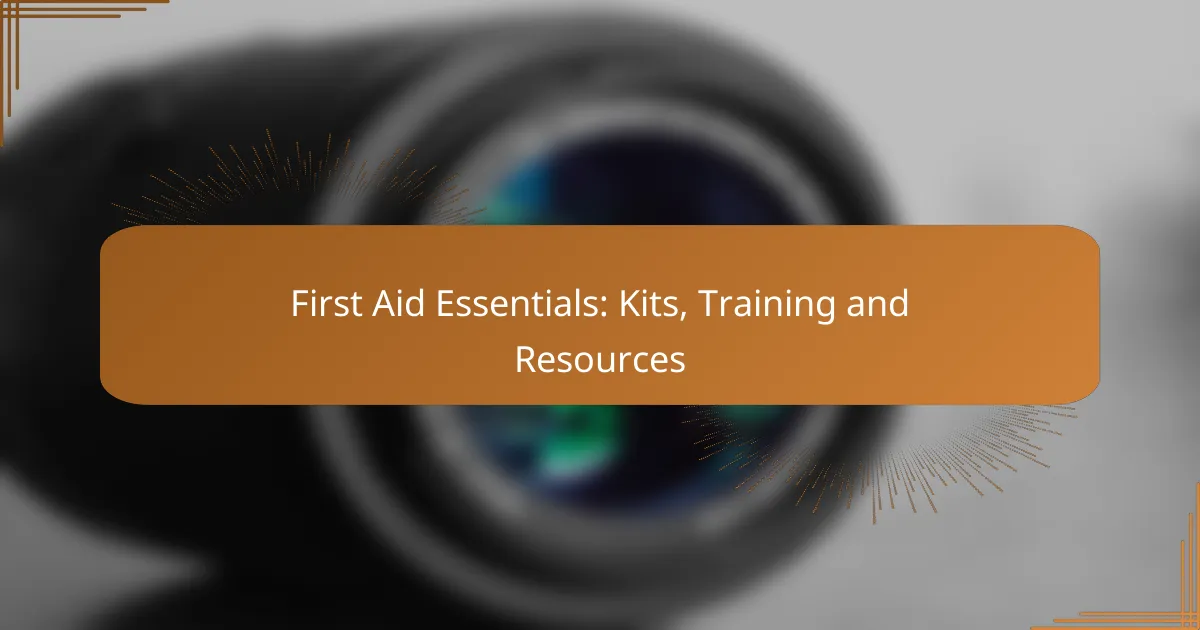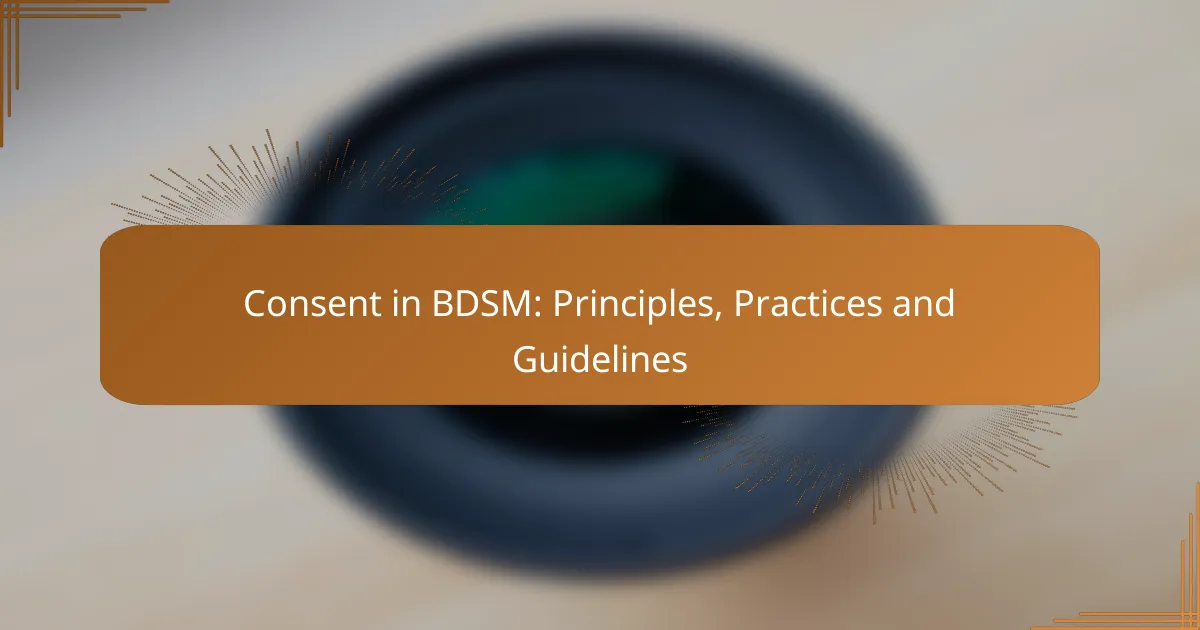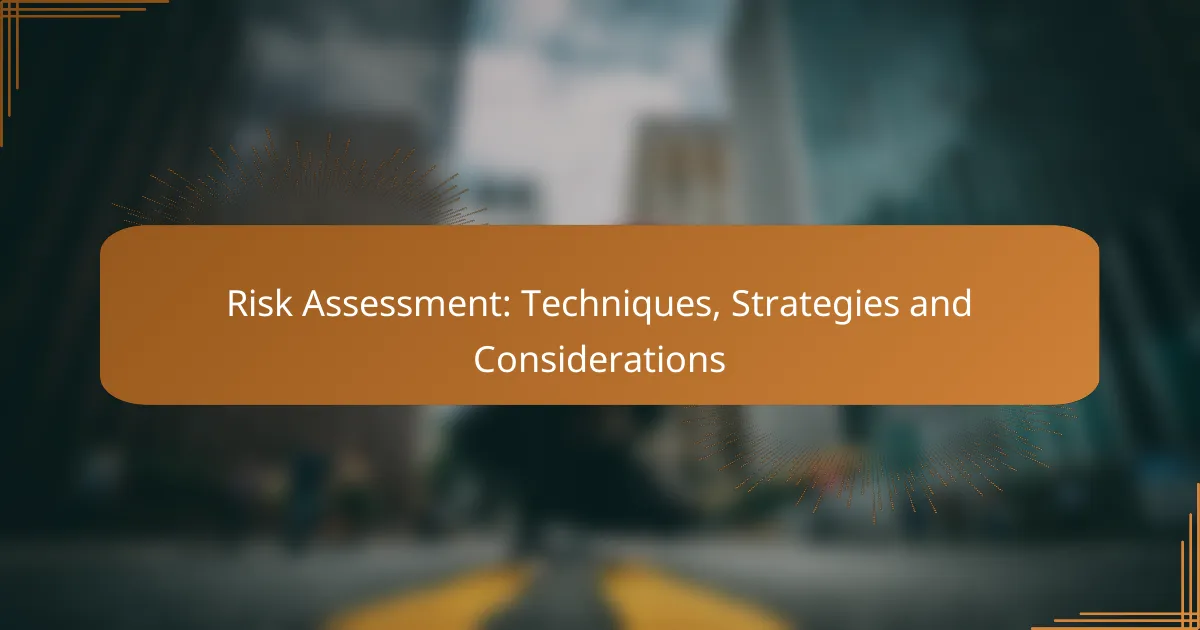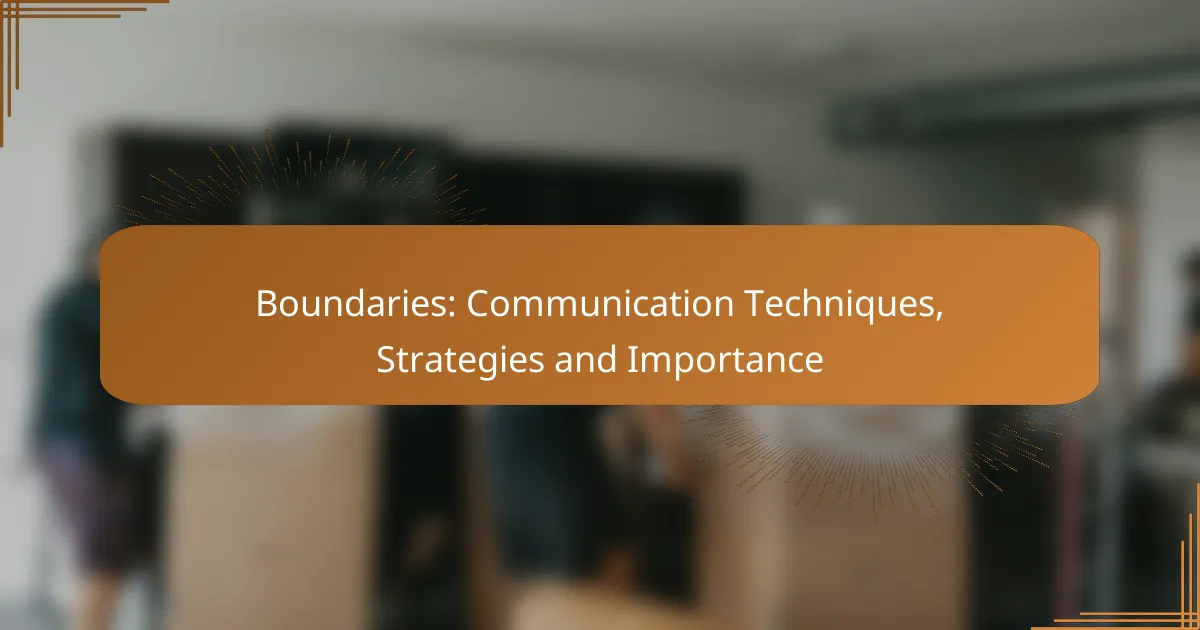First aid essentials encompass well-stocked kits, proper training, and valuable resources to prepare for emergencies. A comprehensive first aid kit tailored to your environment and activities can make a significant difference in managing injuries. Additionally, accessible training options ensure that individuals are equipped with the necessary skills to respond effectively when it matters most.
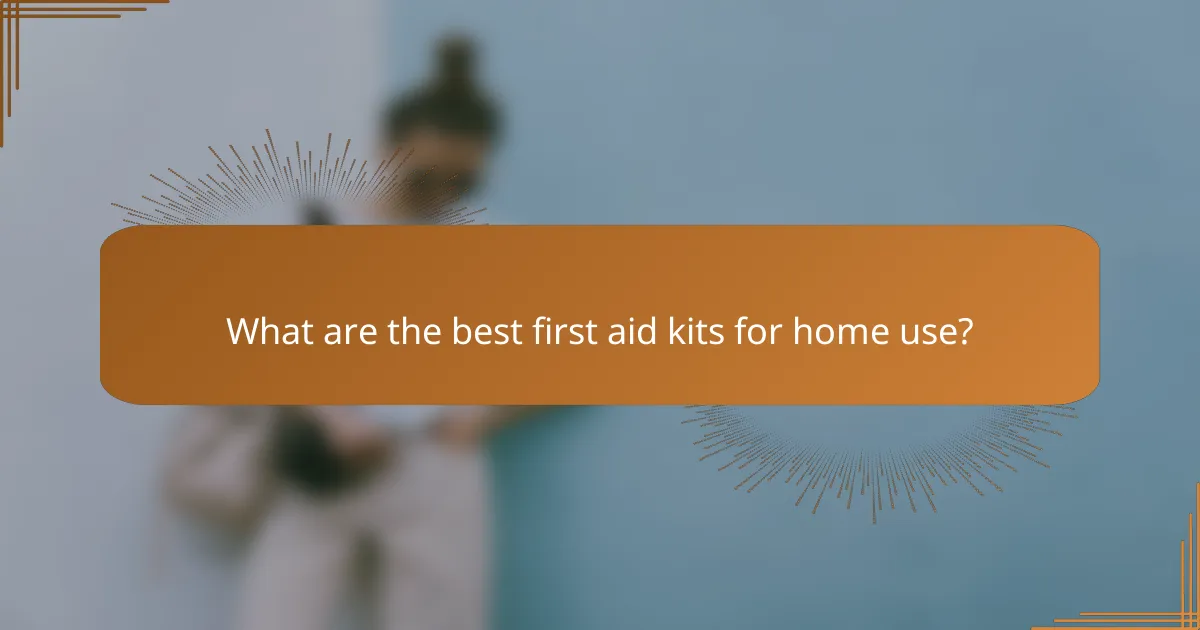
What are the best first aid kits for home use?
The best first aid kits for home use are those that contain a comprehensive selection of medical supplies to address common injuries and emergencies. Look for kits that include items like bandages, antiseptics, and specific tools tailored to your household’s needs.
Red Cross Deluxe First Aid Kit
The Red Cross Deluxe First Aid Kit is designed for families and includes over 100 essential items. This kit features a variety of bandages, antiseptic wipes, and a first aid guide, making it suitable for treating minor injuries at home.
Consider its compact design, which allows for easy storage in a kitchen or bathroom cabinet. Regularly check the kit to ensure supplies are replenished and not expired.
Adventure Medical Kits Sportsman Series
The Adventure Medical Kits Sportsman Series is ideal for active households and outdoor enthusiasts. This kit includes specialized items like splints and a variety of wound care supplies, catering to injuries that may occur during sports or outdoor activities.
It is lightweight and portable, making it easy to take on hikes or camping trips. Ensure that you familiarize yourself with the contents and how to use them before heading out.
Johnson & Johnson All-Purpose First Aid Kit
The Johnson & Johnson All-Purpose First Aid Kit is a well-rounded option that includes a mix of bandages, ointments, and gauze. This kit is particularly user-friendly, with clear labeling and organization for quick access during emergencies.
It’s a great choice for families, as it covers a wide range of common injuries. Regularly review the contents to replace any used items and keep the kit stocked.
Surviveware Small First Aid Kit
The Surviveware Small First Aid Kit is compact yet comprehensive, making it perfect for small spaces or travel. It contains over 100 items, including essential first aid supplies and a waterproof bag for durability.
This kit is particularly useful for those who want a portable option without sacrificing quality. Check the kit periodically to ensure all items are in good condition and ready for use.
AmazonBasics First Aid Kit
The AmazonBasics First Aid Kit offers an affordable option for basic first aid needs. It includes a variety of bandages, antiseptics, and tools, making it suitable for minor injuries and everyday use.
This kit is a practical choice for those on a budget or as a supplementary kit in different areas of the home. Regularly inspect the kit to replace any used or expired items to maintain its effectiveness.
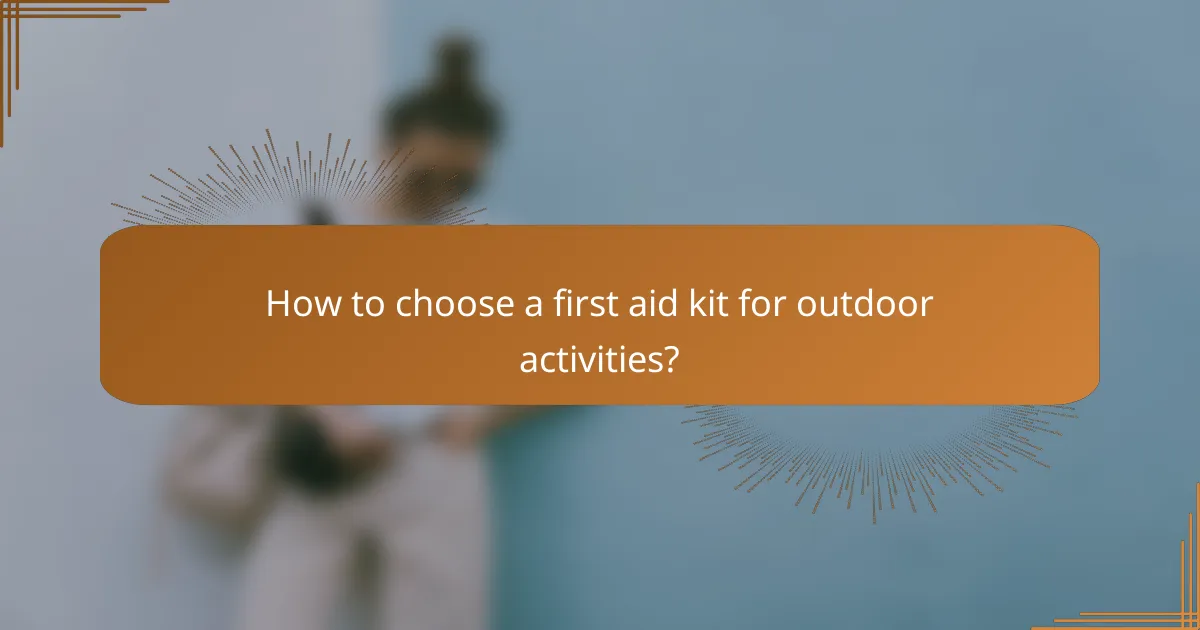
How to choose a first aid kit for outdoor activities?
Choosing a first aid kit for outdoor activities involves considering the specific needs of your adventures, including the environment and the number of people in your group. A well-selected kit can provide essential supplies for treating injuries and managing emergencies effectively.
Consider size and weight
The size and weight of a first aid kit are crucial for outdoor activities, especially if you are hiking or camping. A compact kit that fits easily in your backpack is ideal, while larger kits may be more suitable for group outings or car camping.
Look for kits that weigh no more than a few pounds for easy transport. Consider the balance between carrying enough supplies and minimizing bulk; a good rule of thumb is to choose a kit that can accommodate the number of people you expect to treat.
Assess included supplies
When evaluating a first aid kit, check the included supplies to ensure they meet your specific needs. Essential items should include adhesive bandages, antiseptic wipes, gauze pads, and adhesive tape. Kits designed for outdoor activities may also include items like splints and snake bite kits.
It’s beneficial to review the list of contents and compare it against a recommended checklist for outdoor first aid kits. This will help you identify any missing items that could be crucial in an emergency.
Evaluate waterproof options
Waterproof first aid kits are essential for outdoor activities, especially in wet environments like hiking in the rain or kayaking. A waterproof kit protects supplies from moisture, ensuring they remain effective when needed.
Look for kits with sealed bags or containers that prevent water ingress. If you anticipate exposure to water, consider investing in a dry bag or waterproof case to keep your first aid supplies safe and accessible.
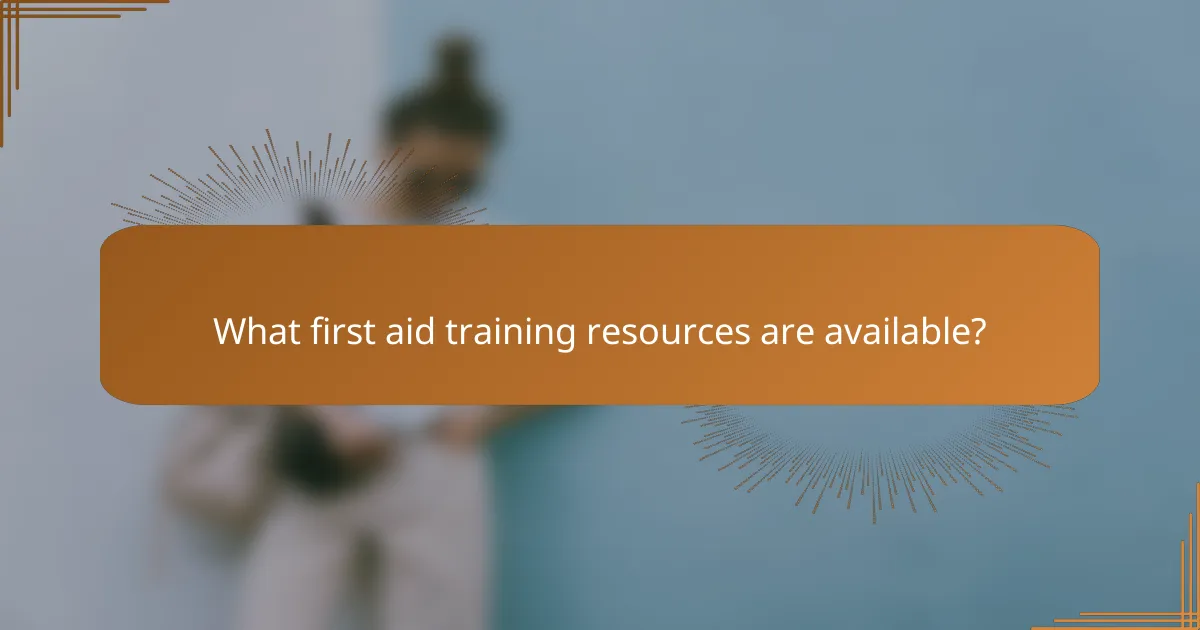
What first aid training resources are available?
Various first aid training resources are accessible to individuals and organizations, including online courses, in-person classes, and certification programs. These resources equip participants with essential skills to respond effectively in emergencies.
American Red Cross First Aid Training
The American Red Cross offers a range of first aid training courses tailored for different audiences, including community members, workplace employees, and healthcare professionals. Their programs cover vital topics such as CPR, choking relief, and basic wound care.
Courses are available both online and in-person, allowing for flexibility in learning. Participants can earn certifications that are valid for two years, which can be beneficial for job requirements or personal preparedness.
St. John Ambulance First Aid Courses
St. John Ambulance provides comprehensive first aid training across various levels, from basic to advanced. Their courses focus on practical skills and knowledge necessary for responding to emergencies, including injury assessment and treatment protocols.
Training is available in multiple formats, including classroom sessions and e-learning options. Certification from St. John Ambulance is recognized in many regions and is often required for certain professions, making it a valuable resource for workplace safety.
National Safety Council Training Programs
The National Safety Council (NSC) offers first aid training programs that emphasize safety and emergency response. Their courses are designed for both individuals and organizations, focusing on the skills needed to handle medical emergencies effectively.
NSC training includes hands-on practice and is often tailored to meet specific workplace needs. Certification is provided upon completion, ensuring participants are well-prepared to act in critical situations.
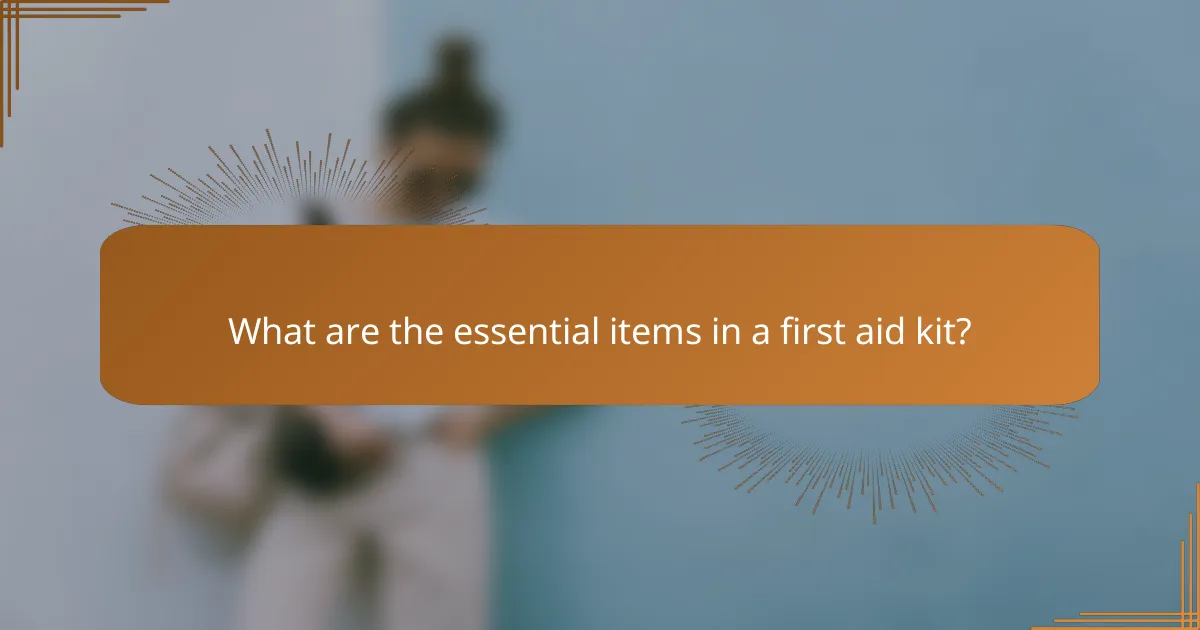
What are the essential items in a first aid kit?
A first aid kit should contain basic supplies to address common injuries and emergencies. Essential items include bandages, antiseptics, and tools for effective treatment.
Adhesive bandages
Adhesive bandages are crucial for covering small cuts and abrasions to protect them from infection. They come in various sizes, making it easy to find one that fits the wound.
When selecting adhesive bandages, consider options with breathable materials and waterproof features for added protection. Keep a variety of sizes in your kit to accommodate different injuries.
Antiseptic wipes
Antiseptic wipes are essential for cleaning wounds before applying dressings. They help reduce the risk of infection by removing dirt and bacteria from the affected area.
Look for wipes that contain alcohol or iodine, as these are effective at disinfecting. Always check the expiration date to ensure they remain effective when needed.
Gauze pads and tape
Gauze pads are used to cover larger wounds and absorb blood or other fluids. They are often secured in place with adhesive tape, making them versatile for various injuries.
When stocking your kit, include different sizes of gauze pads and strong adhesive tape. Ensure the tape is hypoallergenic to prevent skin irritation for sensitive individuals.
Scissors and tweezers
Scissors and tweezers are vital tools for any first aid kit. Scissors can be used to cut gauze, tape, or clothing away from a wound, while tweezers are helpful for removing splinters or debris.
Choose scissors with rounded tips for safety and tweezers with a good grip to effectively handle small objects. Regularly check these tools to ensure they are clean and functional.
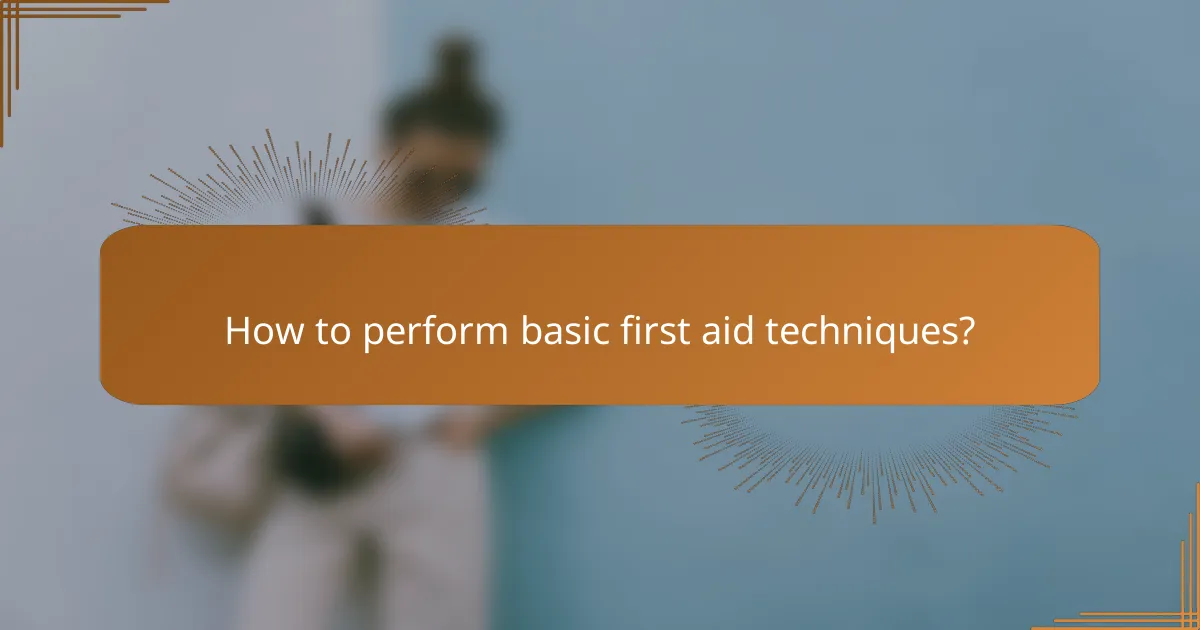
How to perform basic first aid techniques?
Basic first aid techniques are essential skills that can save lives in emergencies. These techniques include CPR, treating burns, and stopping bleeding, each requiring specific steps and considerations to ensure effective care.
CPR steps
Cardiopulmonary resuscitation (CPR) is a lifesaving technique used in emergencies when someone’s heartbeat or breathing has stopped. The key steps include checking the scene for safety, calling for emergency help, and performing chest compressions followed by rescue breaths if trained.
For adults, push hard and fast in the center of the chest at a rate of 100 to 120 compressions per minute, allowing full chest recoil between compressions. If trained, give two rescue breaths after every 30 compressions, ensuring the airway is open.
How to treat a burn
To treat a burn, first determine its severity. For minor burns, cool the area under running water for at least 10 minutes and cover it with a sterile, non-stick bandage. Avoid ice, as it can further damage the skin.
For more severe burns, such as those that are deep or cover a large area, seek immediate medical attention. Do not apply ointments or ice directly to severe burns, and do not break blisters as this can lead to infection.
How to stop bleeding
To stop bleeding, apply direct pressure to the wound with a clean cloth or bandage. Maintain pressure for several minutes without lifting the cloth to check if the bleeding has stopped.
If bleeding does not stop after 10 minutes, or if the wound is deep, seek medical help. Elevating the injured area above the heart can also help reduce blood flow to the wound.
